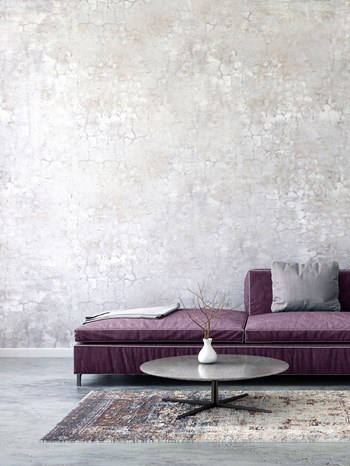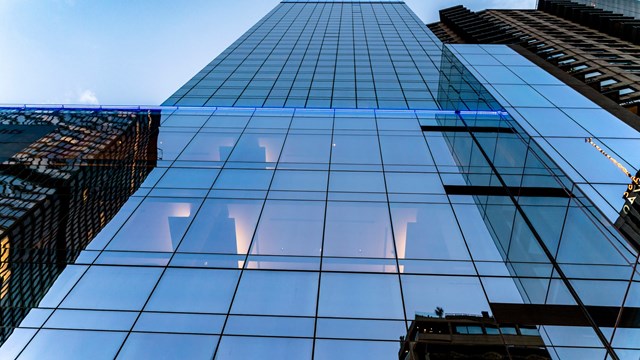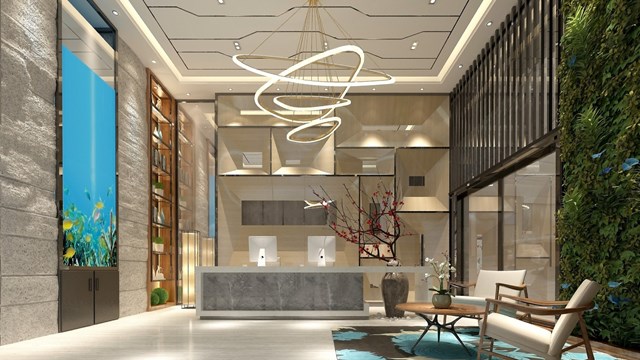
Through the ages, architecture and design have been symbols of evolution and change within societies. From the grandeur of the ancient world, to the Baroque and Romanesque masterpieces of the late Renaissance, and to the towering fancies of the modern and postmodern ages, building design reflects trends in civilization, both technological and sociological.
A Few Definitions
While intricately connected, architecture and design are not the same thing. As defined by the Merriam-Webster Online Dictionary, architecture is defined as, “the art or science of building; specifically, the art or practice of designing and building structures and especially habitable ones.” Michele Boddewyn, President of Boddewyn Gaynor Architects, a national architectural and design firm based in New York City, explains that architecture or architectural design concerns itself with both the exterior and interior components of the project.
Meanwhile, design – or more specifically, interior design – is defined as “the design and coordination of the decorative elements of the interior of a house, apartment office, or other structural space, including color schemes, fittings, furnishings, and sometimes architectural features.” “It’s more concerned with interior space,” says Boddewyn.
Finally, interior decorating is focused on furniture and finishes. “The main difference is that designers may move walls, or change space,” says Boddewyn. “Decorators don’t.”
Trends in Residential Architecture
What drives trends in residential architecture today? Are these trends more concerned with exterior or interior design? Jorge Arias, Principal of Arias Architecture, a New York City-based architectural firm says, “Making design statements in building exteriors is still a valid strategy today. Much depends on the development’s financial strategy. Improved amenities such as media rooms, gym, accessible terraces etc., have become ‘must haves.’ Many developers, however, still choose to have the building exterior designed as a statement. That choice will of course increase costs, but will generate more attention, stronger first impressions, publication in magazines, and so forth. Those factors may translate into faster sales.”
“Ultimately, what people are more concerned with are the amenities within a building,” says Kenne Shepherd, Principal at Kenne Shepherd Interior Design, who has completed projects nationally, including assignments in New York City, Chicago and Boston. Shepherd explains further: “At the scale at which people live,” rather than the scale on which buildings are built, “residents are concerned with the street level, the lobby, and the path to their apartment. Beyond that, the current trends to increased building heights are only appreciated at a distance.”
According to Boddewyn, “Interior trends can affect exterior design. It depends on a developer’s scenario – how they are trying to distinguish themselves from the guy down the block. Are they trying to make a statement, versus a spec-built, throw-it-up-fast-and-rent-it kind of thing?” Clearly, luxury living is budgeted for and reflected in both exterior and interior design, and the two go hand in hand. The bigger the budget, the bigger the statement.
Dorothy Somekh, a broker with Halstead Property in New York, explains the real-life impact of exterior versus interior design on marketability. “The exterior does play a part as one of the many variables a buyer has to consider, but it does not compare to the interior by any means. Of course, that is a general statement. There are architecture buffs that have to live in a magnificently-designed building or love the old prewar architecture and would not consider a bland boring structure. But if they had to choose between a great interior or exterior, the interior would win hands down.”
Today’s Top Five Features
The truth is, five may not be enough. Arias says, “responsible comfort, adaptability, aesthetics, sustainability, and cost,” guide his work. “In terms of space and programming, working from home and/or sharing working facilities are a big consideration. Working from home impacts design because more and more people are doing it at least once or twice a week.” In apartment buildings, “you can share certain functions,” in a public space, “to avoid redundancy and make resources more effective. The byproduct is networking, in a very natural way.” That networking is an integral part of doing business today.
One of the most popular and sought-after amenities in new residential buildings today is on-premises shared workspace. Boddewyn calls this a “seamless blend of home and work. You make work seem like home and home seem like work. That’s an overall trend.” Many new buildings today, both rental and for-sale, feature shared amenity space designed for workstations and meetings.
Boddewyn says another major consideration today is to provide for aging-in-place, what is otherwise known as a NORC, a naturally-occurring retirement community. (https://cooperator.com/article/norcs-on-the-rise). Today, many residents want to stay in their homes for the rest of their lives; and residences, whether they’re a high-rise, suburban or hybrid, must be built with consideration for how the owner will age, and what features need to be incorporated from the beginning to satisfy this expectation.
With respect to trends for interiors, Shepherd says, “Kitchens are very important.” They should open up to the rest of the apartment, creating a natural flow for integrated living. Bathrooms are also at the top of the list. They have become important as an experiential space, a luxurious beginning to the day, more of spa experience. More than ever in urban areas, closets are huge, literally and figuratively. “There’s never enough storage space,” says Shepherd. “Today, thoughtfully designed storage space should rival a retail store.”
Climate Change and Modern Design
Perhaps the most daunting problem confronting architects and designers today is climate change. While there are those who don’t believe and those who don’t care, there are many who are trying to alleviate the problem. Architecture and design are obviously at the forefront of the fight.
Arias says, “In relation to climate change, it is, of course, necessary to align our work with the global movement for sustainability.” Sustainable development is development that meets the needs of the present without compromising the ability of future generations to meet their needs. “Buildings still account for about 40 percent of greenhouse gas emissions on our planet. It is imperative to build with materials coming through the recycling process and other renewable sources. It is also imperative to make building systems-HVAC, plumbing, electrical, etc., as effective and sustainable as possible to make sure we are not wasting resources.”
Sarah Marsh, Principal of MAAI Marsh Architects in New York City, points out that while sustainability may be more common outside of urban areas, mainly due to the types of building materials used—wood is more sustainable than, say, glass and steel, or masonry—programs such as LEED in urban areas have mandated sustainability as a standard. (LEED stands for Leadership in Energy and Environmental Design, a certification program focused on new buildings, and which runs on a point system.) Internationally recognized, LEED provides third-party verification that a building is designed and built using strategies aimed at improving performance across all the metrics that matter most, energy savings, water, and air.
“We have limited resources of clean air and water,” says Marsh. “That is the fundamental underpinning of the LEED project. You are taking care of water use and emissions from your building systems. You take care of energy efficiency by choosing a very energy-efficient skin for the building. That might be masonry or triple glazing (three layers of glass with air pockets between them). Energy efficiency is the main consideration, to be able to heat and cool the property efficiently. Masonry is vastly more efficient than glass” — although Shepherd says, “skins of buildings, even glass skins, are becoming more dynamic and better insulated, like triple pane.”
Shepherd also offers another consideration: “The reality of climate change is huge and is certainly affecting the design of buildings. Sustainability is tremendously important. Even in New York City,” and other urban areas such as Boston and Miami, potentially affected by rising sea levels, “architects, designers and developers must look at where [floodplains] are located. One of the key things for a residential building is the ability to maintain power, the ability to have a backup, alternative energy source not located in a basement where potentially, it can get flooded. It must be on an upper floor. Think about [Superstorm] Sandy!” Shepherd continues that, “energy codes are becoming more stringent, so architects and designers are using sources more energy efficient than ever before. All this is ultimately driven by climate change, but is enacted through municipal building codes.”
Challenges
What about the future? Architects and designers face developing challenges. Their world is anything but static. Boddewyn says one of the greatest challenges, “is the cost of construction. It just keeps rising.” Quality, she says, “has suffered, despite technology. Ultimately, the architect’s goal is to reduce a building’s operating costs through architecture, design and technology.”
Marsh says, “Technology is dominant in everyone’s thinking. Systems controlled by phone or tablet. More time and attention is paid to interiors.” As a result, interior design can affect exterior design, specifically higher ceiling heights can result in higher building heights, or limit the number of floors, thereby reducing the number of units and increasing price.
Shepherd adds that “dealing with a change of lifestyles in the age of the internet,” is a growing challenge. “Design is a bespoke service. We live in an age where you shop for anything and everything online.” Designers have to keep that idea in the forefront of their projects.
Perhaps Arias sums up the answer best: “Achieving a balance between all the pressing issues of the time has always been the main challenge for architects. In the larger picture, creating meaningful designs that reconcile the possibilities for the individual with sustainable growth for the community, and making everyone represented in the endeavor, is a difficult task.”
But then, isn’t that how the pyramids got built?
A J Sidransky is a writer/reporter for The Cooperator and a published novelist.






Leave a Comment